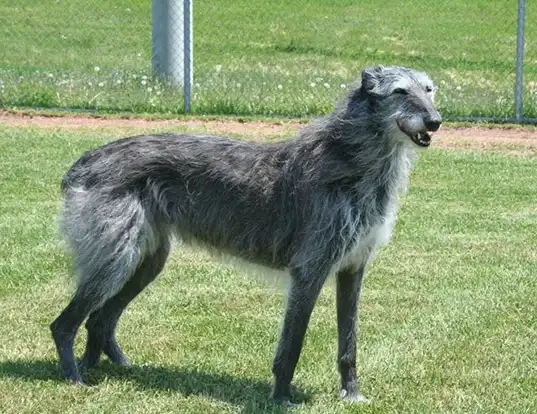Nova Scotia Duck Tolling Retrievers are incredible dogs are widely renowned for their exceptional skills in retrieving waterfowl and their ability to toll or lure ducks within range of hunters. Originating from the province of Nova Scotia in Canada, these intelligent and energetic canines are affectionate, loyal, and make fantastic family pets. Whether you’re an avid hunter or simply a lover of water-loving dogs, the Nova Scotia Duck Tolling Retriever is the ultimate choice for all your water adventures. In this article, we will explore the unique qualities and characteristics that make them the ultimate water dogs.
History of Nova Scotia Duck Tolling Retrievers
Origins of the breed
The Nova Scotia Duck Tolling Retriever, also known as the Toller, has a fascinating history that dates back to the early 19th century. This breed has its roots in Nova Scotia, Canada, where it was developed specifically for the purpose of retrieving waterfowl.
The origins of the breed can be traced back to European hunting dogs, including the Cocker Spaniel, Golden Retriever, and even the Chesapeake Bay Retriever. These dogs were brought to Nova Scotia by European settlers, who needed a versatile and skilled companion for hunting and retrieving.
Development of the breed
In the early days, the breeders in Nova Scotia sought to create a dog with exceptional retrieving skills, especially when it came to ducks. They wanted a dog that could attract ducks closer to the hunters by wagging its tail and playing in the water. This unique technique, known as “tolling,” gave the breed its name, Nova Scotia Duck Tolling Retriever.
Through careful breeding and selection, the breeders managed to develop a dog that not only excelled in tolling but also possessed remarkable swimming abilities. Tollers were trained to retrieve ducks from icy waters, making them the ultimate water dogs. Their double coat, consisting of a dense undercoat and a water-resistant outer coat, protected them from the harsh Canadian climate.
Recognition as a breed
The Nova Scotia Duck Tolling Retriever gained recognition as a distinct breed in the early 20th century. The breed’s popularity spread beyond Canada, and it quickly gained a reputation as an excellent hunting and retrieving companion.
In 1945, the Canadian Kennel Club officially recognized the breed, followed by the American Kennel Club in 2003. Today, Tollers are not only cherished for their hunting skills but are also beloved family pets and show dogs worldwide.
The breed’s unique history and remarkable abilities as water dogs have made Nova Scotia Duck Tolling Retrievers a favorite choice for hunters, outdoor enthusiasts, and dog lovers alike.
Characteristics of Nova Scotia Duck Tolling Retrievers
Physical appearance
Nova Scotia Duck Tolling Retrievers are medium-sized dogs that have a well-muscled and compact body. They have a handsome and athletic appearance, with a slightly longer body than their height. Their double coat is water-resistant and helps them stay warm even in cold water. These dogs have a beautiful feathered tail that is often wagging, especially when they are excited or working.
Temperament and personality
Nova Scotia Duck Tolling Retrievers are known for their friendly and outgoing nature. They are extremely intelligent and eager to please, making them a joy to train. These dogs are also very affectionate and loyal to their families, often forming strong bonds with their owners. They are generally good with children and other pets, although proper socialization from an early age is important. With their playful and active nature, they make excellent companions for families who enjoy outdoor activities and water sports.
Trainability and intelligence
Nova Scotia Duck Tolling Retrievers are highly trainable due to their intelligence and eagerness to learn. They excel in various dog sports and activities such as obedience, agility, and flyball. These dogs thrive on mental stimulation and enjoy having a job to do. They are quick learners and respond well to positive reinforcement training methods. With consistent and patient training, they can quickly pick up commands and tricks. Their intelligence and trainability make them well-suited for various working roles, including search and rescue, therapy work, and assistance tasks.
In conclusion, Nova Scotia Duck Tolling Retrievers possess distinctive characteristics that make them the ultimate water dogs. Their physical appearance, friendly temperament, and high trainability make them a popular choice for families and individuals seeking a versatile and devoted companion.
Working Abilities of Nova Scotia Duck Tolling Retrievers
Hunting skills
Nova Scotia Duck Tolling Retrievers are known for their exceptional hunting skills. They were originally bred in Nova Scotia, Canada for the purpose of luring and retrieving ducks. Their hunting abilities make them well-suited for various hunting scenarios, both on land and in water.
These intelligent and agile dogs have a natural instinct for hunting. They possess a keen sense of smell, which allows them to track and locate game with precision. Their compact size and sturdy build enable them to maneuver through dense vegetation and navigate challenging terrains effortlessly.
Water retrieving abilities
One of the standout characteristics of Nova Scotia Duck Tolling Retrievers is their exceptional water retrieving abilities. These dogs have a natural affinity for water and are excellent swimmers. Their thick double coat provides insulation and buoyancy, making them well-suited for retrieving waterfowl in cold waters.
Nova Scotia Duck Tolling Retrievers have a unique hunting technique called “tolling.” They use their playful and energetic nature to attract ducks towards the shore, mimicking the actions of a fox or other predators. Once the ducks are within range, these retrievers swiftly retrieve them from the water, making them a valuable asset to hunters.
Versatility in various dog sports
Apart from their hunting and water retrieving abilities, Nova Scotia Duck Tolling Retrievers also excel in various dog sports. Their athleticism, intelligence, and eagerness to please make them highly versatile in activities such as agility, obedience, flyball, and dock diving.
In agility competitions, these dogs showcase their agility and speed as they navigate through obstacle courses with precision and grace. Their intelligence and trainability make them excellent candidates for obedience trials, where they can demonstrate their ability to follow commands and perform complex tasks.
Nova Scotia Duck Tolling Retrievers also excel in flyball, a team sport that involves dogs racing against each other in a relay race. Their high energy levels and natural athleticism make them well-suited for this fast-paced and exciting sport. Additionally, their love for water and retrieving instinct make them excellent participants in dock diving competitions, where they can showcase their impressive jumping and retrieving abilities.
In conclusion, Nova Scotia Duck Tolling Retrievers possess exceptional working abilities. From their hunting skills and water retrieving abilities to their versatility in various dog sports, these dogs truly live up to their reputation as the ultimate water dogs.
Caring for a Nova Scotia Duck Tolling Retriever
Exercise and activity requirements
Nova Scotia Duck Tolling Retrievers are highly energetic and require regular exercise to keep them happy and healthy. These dogs were bred to work alongside hunters, so they have a natural drive to stay active and engaged. Aim for at least an hour of exercise every day, which can include walks, runs, playtime, and retrieving games. Mental stimulation is equally important, so consider providing puzzle toys, obedience training sessions, or agility courses to keep their minds sharp.
Grooming needs
Maintaining the coat of a Nova Scotia Duck Tolling Retriever is essential to keep them looking their best. These dogs have a thick double coat that requires regular brushing to prevent matting and remove loose hair. Brushing two to three times a week should be sufficient, but during shedding seasons, daily brushing may be necessary. As these dogs are prone to ear infections, it is crucial to clean their ears regularly and check for any signs of redness or irritation. Additionally, trim their nails regularly and brush their teeth at least two to three times a week to promote good dental hygiene.
Health considerations
Like all dog breeds, Nova Scotia Duck Tolling Retrievers are prone to certain health conditions that potential owners should be aware of. Some common health issues in this breed include hip dysplasia, progressive retinal atrophy (PRA), and autoimmune disorders. Regular vet check-ups, a balanced diet, and exercise can help prevent these health problems. It is also important to provide them with a suitable diet to maintain their weight and prevent obesity, as excess weight can exacerbate joint issues. Early detection and proper care are crucial in managing the health of a Nova Scotia Duck Tolling Retriever and ensuring a long and happy life.
Remember that providing proper exercise, grooming, and healthcare are essential aspects of caring for a Nova Scotia Duck Tolling Retriever. By meeting their needs, you can ensure that your furry companion remains healthy, happy, and the ultimate water dog.
The Nova Scotia Duck Tolling Retriever is truly the ultimate water dog. With their striking appearance, intelligence, and exceptional hunting skills, they excel in retrieving waterfowl and are highly regarded as a versatile breed. Whether it’s working in the field or participating in water sports, these dogs are always up for a challenge. Their natural ability to lure and retrieve ducks makes them a valuable asset to hunters, and their friendly and affectionate nature also makes them wonderful family pets. If you’re looking for a loyal and energetic companion that thrives in the water, the Nova Scotia Duck Tolling Retriever is the perfect choice.







